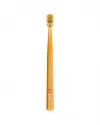











 Swiss premium oral care
Swiss premium oral care
 United Arab Emirates
United Arab Emirates

Animal-design toothbrushes
Get closer to nature with these ultra-soft toothbrushes
Animal-design toothbrushes
Get closer to nature with these ultra-soft toothbrushes
Nature and wildlife: A perfect harmony
The harmonious interplay between nature and animals – no matter how small – is of great importance, because each species makes its own unique contribution to the ecosystem of our world.
Special editions
An eye-catching bathroom accessory. These toothbrushes are the result of collaborations with both established and upcoming artists from across the globe.
Plaque’s toughest opponent – the gentleness of Curen® filaments. The 5460 ultra-soft Curen® filaments form an incredibly dense and efficient cleaning surface. Once you’ve tried a CS 5460 toothbrush, you’ll never want to give up that clean feeling. The compact head with a slight angle reaches every nook of the mouth. Made in Switzerland.
Free from harmful substances such as bisphenol A (BPA), phthalates or azo dyes.
 Swiss premium oral care
Swiss premium oral care

